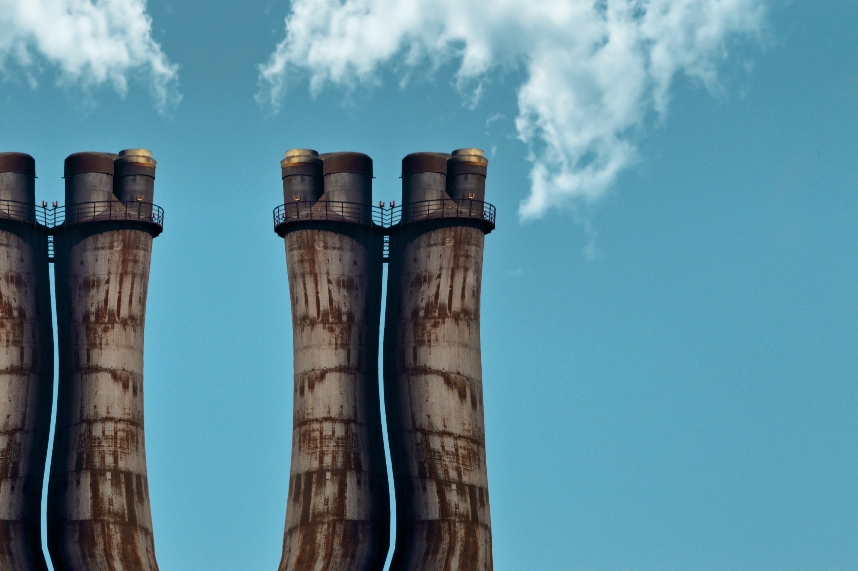Can development and environment go hand in hand?

Humanity is growing at an exponential rate. Barely more than a decade ago, we crossed the staggering milestone of 7 billion humans on this planet, and in what seems like the blink of an eye, we are already nudging up against 8 billion. The numbers seem almost unbelievable when you consider that, as recently as around 200 years ago, humanity was still under a billion strong. The implications of such growth going forward is certainly something we will have to acknowledge and deal with, but, in the meantime, there are more pressing matters to contend with, such as the development of homes and general infrastructure for the growing population.
Unfortunately, the growing climate crisis is something that can’t be ignored or put off any longer, and it goes hand-in-hand with development, which can have a range of detrimental effects on the environment, both locally and globally. The question we are forced to answer now is whether the development necessary to accommodate our growing population can be achieved in a way that does not exacerbate—or could even help to ease—the climate crisis.
Urbanisation and the destruction of nature
We learn early on in life that plants are responsible for the air we breathe. Later on, we learn they play a crucial role in absorbing the harmful carbon dioxide that is the most prevalent greenhouse gas in our atmosphere. Yet every time we urbanise a previously natural area, we remove a little more of the planet’s capacity to remove carbon dioxide from the atmosphere.
Beyond that, the process of developing those areas is often harmful in and of itself. Cement, which is one of the most common construction materials, is estimated to be responsible for around 8% of the world’s carbon dioxide output, a fact that further exacerbates the negative effects of developing in the natural world.
There are other areas of concern, of course, such as the ongoing carbon footprint of developed areas in terms of electricity usage, heat production and more.
The developing world conundrum
A particularly thorny issue around the environmental impact of development is that of developing countries like India and China. It can easily be argued that Western countries like the United States and the United Kingdom—who have benefitted from centuries of industry and exploitation of the environment—can’t expect developing countries to hold themselves to the same standard of environmental protection that they themselves were not subjected to. But, at the same time, the environmental crisis affects everyone regardless of who the main culprits are.
One could argue that developed nations have a moral obligation to help their developing counterparts to grow in an environmentally sustainable way, thus reducing the total net impact on the environment across all nations.
Tackling the problems
Continued development that minimises the negative impact on the environment—and, better still, actively improves things—is always in discussion, and there are several ways to achieve this kind of improvement. Here are a some of the most prominent:
Renewable energy sources
Any development requires energy, but beyond that, when the construction is finished, and the machinery has left the site, the resulting development will continue to use power. The continued drive to replace fossil fuels with renewable energy sources will have a knock-on effect that benefits the environment.
It’s important to remember that any individual technology that needs power, no matter how green it may seem, is still actively harming the environment if it is getting its power from a system that runs fully or partially on fossil fuels. Every watt of energy in a nation’s power grid that is produced by a wind turbine, solar panel, or any number of other renewable options is a watt that’s doing less damage to the environment, both during development and after.
Greener architecture
Wherever possible, the use of greener building methods can ease the strain that development puts on our ecosystem. Such methods vary in scale from building more efficient structures that require fewer resources in the way of heating or cooling to things like green roofs.
Making a building more efficient at maintaining the desired temperature reduces the amount of energy required to keep the occupants comfortable, which in turn reduces the ongoing carbon footprint of that building. Similarly, green roofs—also known as garden roofs or living roofs, essentially a roof planted with vegetation—replace some of the lost nature that the development took away. Remember, nature doesn’t stack. Even a twenty-storey building only takes up a modest footprint on the ground, and a roof covered in plant life can mitigate most of that lost footprint. Green roofs also help in a number of indirect ways, such as increasing the insulative properties of a building’s roof and reducing the “urban heat island” effect that developed areas cause.
Another solution is grasscrete, which is essentially a surface that provides the same benefits of a hard, concrete floor, but allows grass to grow through its structure and thus reclaiming some of that area’s ability to absorb carbon dioxide.
Incentives
The sad reality of the corporate world is that businesses will only take action if there is a strong incentive for them to do so. This incentive may come in the form of customer demand or other market pressures. It may be the promise of positive public relations from a charitable act. It can also come from regulatory pressures.
Governments will obviously play a huge role in mitigating this potential crisis, and one of the ways they can play that role is by incentivising the companies that are developing natural land to take more environmentally sustainable approaches. This can come in both the form of punitive measures—such as increasing tax for certain materials—or positive reinforcement—such as offering grants or other green finance incentives to use greener methods and designs.
Targets
While corporations are a known quantity, governments tend to have their own quirks and motives that won’t always align with the best interests of the species at large. Having international goals targets such as the Sustainable Development Goals (SDG) adopted by the United Nations gives member nations a clear watermark to aim for.
In the case of the SDGs, that watermark is not a simplistic target like reducing carbon by a certain year. It specifically prioritises the progress of member nations that are furthest behind. It also tackles the problem in a myriad of ways, such as targeting poverty and hunger, things that indirectly contribute to the ongoing climate crisis.
Conclusion
The climate crisis is often a hot-button issue in politics and social discourse, but the general consensus of the scientific community is that it’s real, it’s a near-term threat, and it is significantly exacerbated by human activity. Tackling environmental issues needs to be something that is considered in many areas of life, but as humanity stares down the barrel of a planet in crisis with over 8 billion people to sustain, the world of development is certainly up there with the most pressing of concerns.
The history of our species has rarely been one of mass cooperation, but when it comes to the climate, we really are all in this together. It is in the best interests of developed countries to help their developing cousins to get through their growing pains without worsening the environmental situation for everyone.
